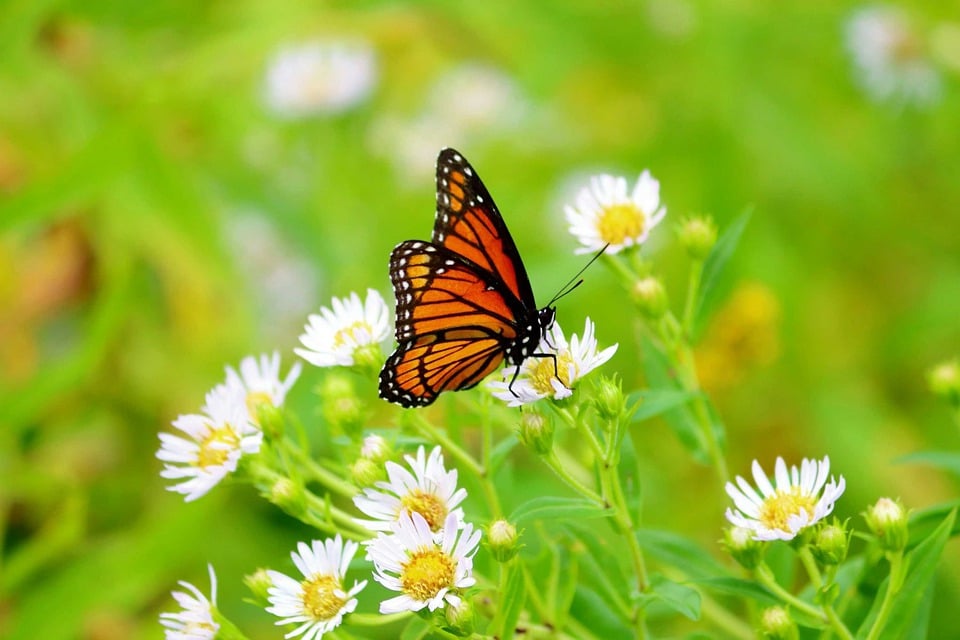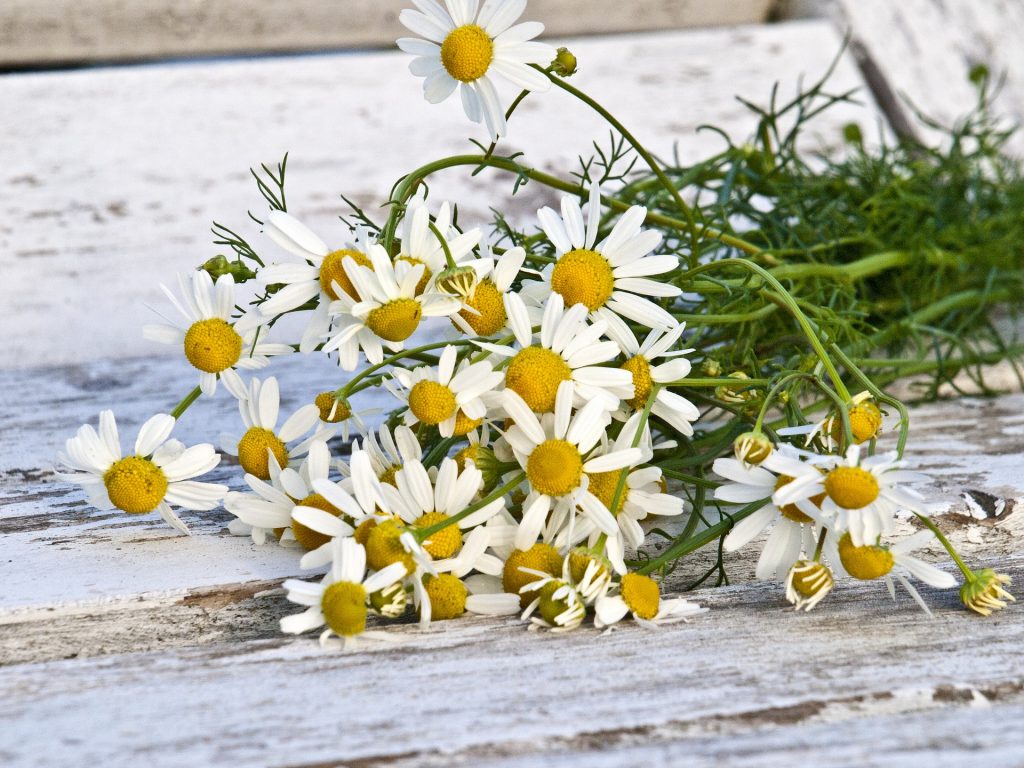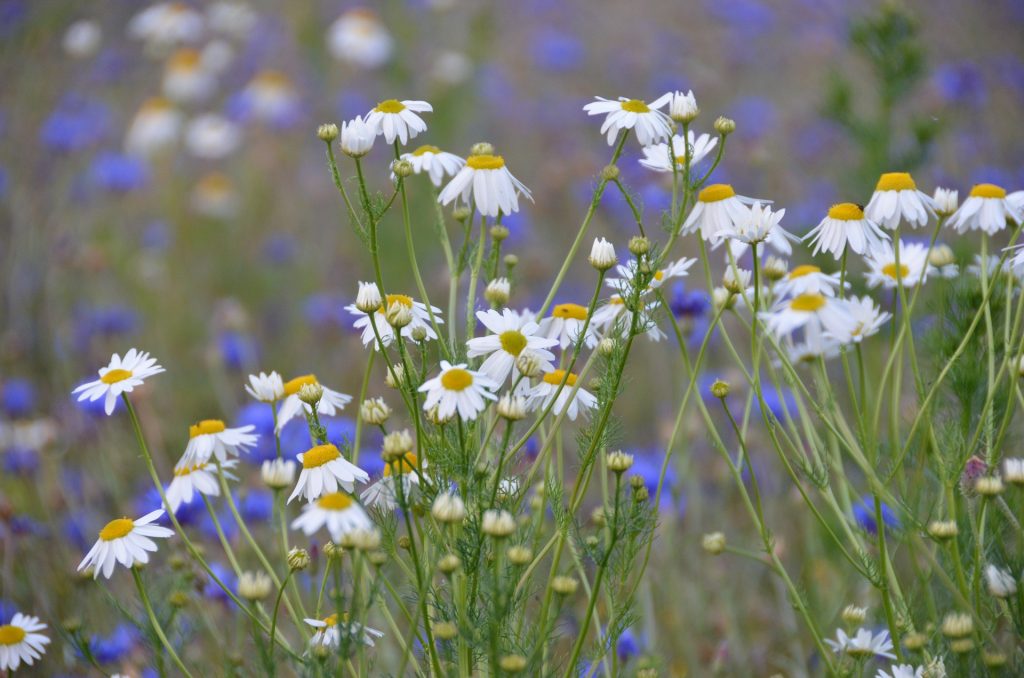Matricaria chamomilla is the scientific name of German chamomile, which means “water of youth”. This plant originates in Europe and Western Asia. It can also be found in Australia and the temperate part of North America. This is an annual plant, meaning it only has one growing season. Not to worry, since it grows a lot, between 20 to 30 inches (50 to 70 centimeters)! It is suitable in Zones 4 to 9 of the United States.
Its feathery leaves are a light green color similar to a fern. Flowers of the German chamomile grow on a solitary stem. They resemble the flower of the daisy with a yellow cone shaped center surrounded by white petals. It is a more prolific bloomer than the Roman chamomile. This is the more popular type of chamomile, used mostly for tea.
This species can be considered an invasive plant or weed in some places. It attracts bees, butterflies, and birds, as well as beneficial insects, like predatory wasps and hoverflies, with its fragrant blossoms.

Flavor
The flavor is similar to apples. Flowers and leaves (are bitter) can be used to make tea or included in a salad.
How to care for German chamomile
Seed propagation
Chamomile is not reproduced by cuttings. German chamomile seeds need light to germinate, which makes the process more complicated. Seeds will germinate in approximately one to two weeks. It is best to start them indoors around March, then wait until all the frost is gone to transplant them outside. A hardening period is recommended, which means gradually placing the seed tray outside in a sheltered location to get the seedlings used to the exterior conditions. They can also be planted outside directly on the soil around August. If planted in fall they will stratify over winter, germinating the following spring.
Once established, this is a very hardy plant. The also self-sow, meaning you should remove flowers unless you want more seedlings in the following season. Propagation by transplants is more efficient than by seeds.

This plant is not recommended for containers, unless it is very large pot since it spreads and grows out freely. It should be planted 6 inches (15 centimeters) apart from another plant. They take approximately six weeks from seed to plugs, then four to six more weeks to be ready to be sold as plants.
Companion planting
Chamomile can increase essential oil production of other herbs when planted near them. It is a good companion plant for basil, onion, wheat, cabbage and cucumbers.
Soil
German chamomile grows in a wide range of soil pH between 5.6 (acidic) and 7.5 (neutral). It does well in average to poor soils with clay. Although it will grow in almost any soil, if the soil is too poor it might become top heavy and lean over. In this case use a bamboo stake and garden twine to hold it straight. Drainage is preferable. It can also be grown using soilless potting mixes, perlite, rock wool, coco peat and vermiculite.
Light
German chamomile prefers open sunny locations, however, it will also grow in lightly shaded areas especially if the climate is hot.

Water
This plant has shallow roots, which barely grip to the top soil, making it very sensitive to water conditions during the initial stages of growth. After, it can be watered regularly without over watering. Allow soil to go almost dry between watering, then soak completely. German chamomile becomes tolerant to drought, being able to survive with one inch of rain per week.
Pests and Diseases
This specie has minimal disease issues, however it can be susceptible to aphids, thrips and mealybugs. When the weather is hot and damp, chamomile can have problems with powdery mildew. Its strong scent usually keeps pests away. Chamomile tea is used in gardening as a herbicide and aid against mildew.
Harvesting
Flowers appear late spring, but if you prune the plant they might take longer to bloom. Chamomile flowers bloom between May and October in the northern hemisphere. It is time to harvest when the flower petals begins to curl downward, instead of straight
The leaves are bitter, so only use the flowers which can be plucked off the flower heads. If you are drying the flower heads, simply place them separately on a mesh surface or cheesecloth in a cool, dry place for about a week.